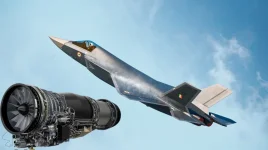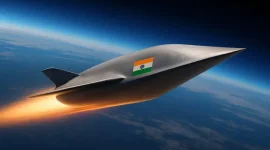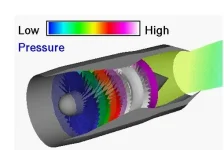- Views: 5K
- Replies: 18
India is nearing a significant milestone in its military aviation capabilities, with a partnership agreement for the joint development of a powerful sixth-generation fighter jet engine expected to be finalized within the next two to three months. Dr. Samir V. Kamat, Chairman of the Defence Research and Development Organisation (DRDO), confirmed this development on April 13, 2025.
Speaking at a defence technology event in Kurnool, Andhra Pradesh, Dr. Kamat announced that discussions are in their final stages with four international aerospace firms competing for the prestigious project.
This collaboration aims to produce the advanced propulsion system needed for India's upcoming Advanced Medium Combat Aircraft (AMCA) Mk2 variant and potential future sixth-generation fighter platforms. Securing this partnership is seen as a crucial step in advancing India's position among global leaders in cutting-edge aerospace technology.
"We are in advanced discussions with four OEMs, and we expect to conclude the partnership deal in the next two to three months," Dr. Kamat stated, underscoring the program's strategic priority.
The engine under development is targeted to produce between 110 and 130 kilonewtons (kN) of thrust. It will incorporate sophisticated technologies like Variable Cycle Engine (VCE) capabilities.
Variable Cycle Engines represent a leap from current fifth-generation power plants, offering potential improvements of up to 30% in operational range and 20% in acceleration.
VCE allows the engine to alter its airflow, optimizing performance for different phases of flight, leading to greater fuel efficiency, increased thrust when needed, and better heat management, which is vital for incorporating future systems like directed energy weapons.
These features are considered essential for ensuring the competitiveness of the AMCA and subsequent Indian fighter aircraft against global counterparts such as the American Next Generation Air Dominance (NGAD) and China's developing J-XX programs.
The four international companies reportedly vying for the partnership are thought to include Safran (France), General Electric (USA), Rolls-Royce (UK), and potentially NPO Saturn (Russia), all possessing significant expertise in advanced jet engine technology.
Dr. Kamat stressed that co-development with an experienced global partner is necessary to manage the technical complexity, shorten the development timeline, and mitigate risks.
"A sixth-generation engine requires a $4-5 billion investment, and partnering with a global leader ensures we achieve this capability swiftly," he explained, referencing the extended development period of India's indigenous Kaveri engine program.
The overall AMCA program received government approval in 2024 with an initial budget allocation of approximately ₹15,000 crore. The first version, AMCA Mk1, is planned to use the American GE F414 engine (producing 98 kN of thrust), with its maiden flight anticipated around 2030 and squadron service expected by 2035.
The subsequent AMCA Mk2 variant, projected for introduction around 2040, requires the significantly more powerful new engine to achieve capabilities like supercruise (sustained supersonic flight above Mach 1.2 without using fuel-intensive afterburners) and to effectively integrate advanced systems, potentially including artificial intelligence-coordinated drone swarms and laser-based weaponry.
India's Gas Turbine Research Establishment (GTRE), based in Bengaluru, will spearhead the Indian contribution to the engine collaboration, building upon the experience gained during the Kaveri engine project, which successfully demonstrated indigenous capability up to 81 kN thrust.
Dr. Kamat's confirmation follows extensive negotiations over recent years. While France's Safran was previously considered a leading contender, particularly after high-level discussions during Prime Minister Narendra Modi's visit to Paris in 2023, the competitive field has expanded.
Factors potentially influencing the final selection include General Electric's existing deal to supply F414 engines for India's Tejas Mk2 fighter and Rolls-Royce's expressed interest in jointly creating a 110 kN thrust engine with India.
The final decision in the coming months will mark a pivotal moment for India's indigenous fighter aircraft program.





